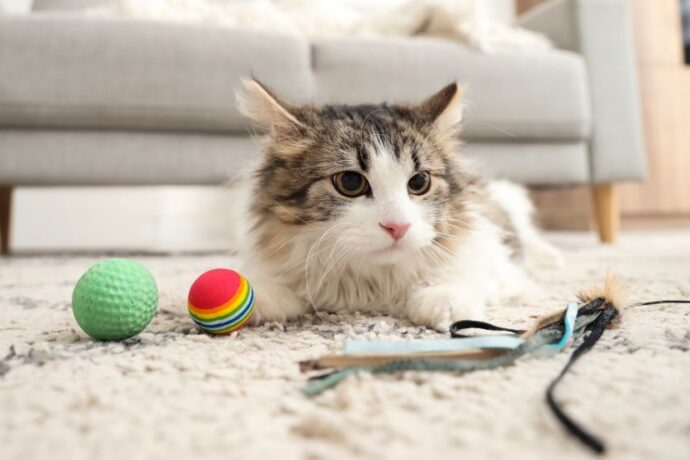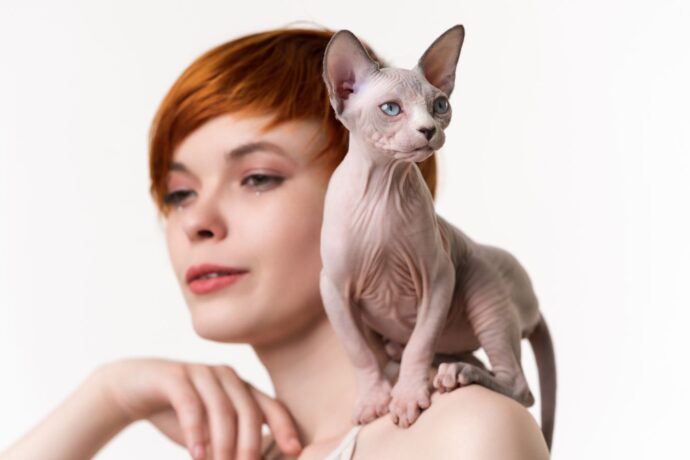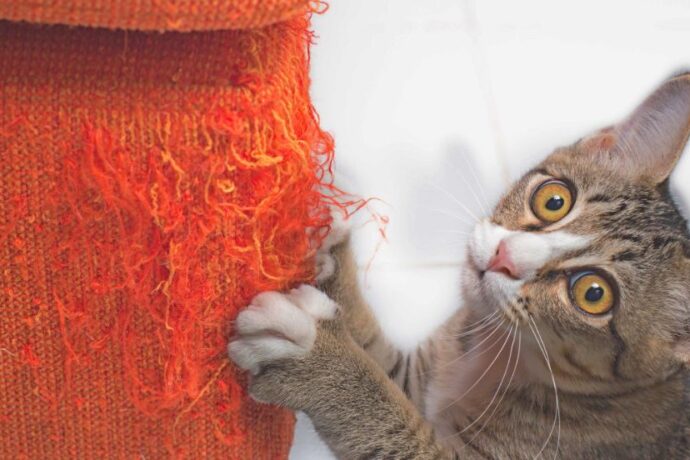Cats have fascinated humans for thousands of years—with their graceful movements, curious nature, and sometimes puzzling behavior. From ancient temples in Egypt to modern living rooms across the globe, these furry companions have held a special place in our hearts. But beneath their adorable appearance lies a fascinating mix of science, instinct, and mystery. Here are 15 fun and surprising cat facts that even the most devoted cat lovers might not know.
15 Fascinating Cat Facts You Probably Didn’t Know
1. Cats Have a Unique “Purr Frequency” That Promotes Healing
A cat’s gentle purr is more than just a sign of happiness — it’s a biological marvel. The frequency of a cat’s purr, usually between 25 and 150 Hertz, falls within a range known to promote bone density and tissue regeneration in humans and animals. Researchers from the Journal of the Acoustical Society of America have found that such frequencies can accelerate healing and reduce pain (1). This might explain why cats instinctively purr when they’re injured or stressed — their bodies could literally be self-healing.
2. Your Cat’s Nose Is as Unique as a Human Fingerprint
If you take a closer look at your cat’s nose, you’ll notice a pattern of tiny ridges and bumps. Each cat has a distinctive pattern that could, theoretically, be used for identification — just like a fingerprint in humans. Some veterinarians and breeders have even proposed using nose prints as a form of biometric identification for cats in the future.
3. Cats Can’t Taste Sweetness
You may have tried offering your cat a lick of ice cream only to get an indifferent look — and there’s a scientific reason why. Cats lack the T1R2 and T1R3 taste receptor genes responsible for detecting sweetness. According to the Monell Chemical Senses Center, this evolutionary trait is due to their obligate carnivore status; their diet in the wild consists almost entirely of meat, so there was no evolutionary need to taste sugar (2).
4. Their Whiskers Are Super Sensors
A cat’s whiskers, or vibrissae, are incredibly sensitive tools. They’re rooted deep in the skin and connected to the nervous system, allowing cats to detect even the slightest changes in air currents. This sensitivity helps them gauge whether they can fit through tight spaces and navigate in darkness. Whiskers also communicate emotions — forward-facing whiskers indicate curiosity or aggression, while relaxed whiskers show calmness. Cutting or damaging them can cause disorientation and anxiety.
5. Cats Sleep Up to 70% of Their Lives
On average, cats sleep 13 to 16 hours a day — and some senior cats snooze even longer. This habit stems from their ancestors, who needed to conserve energy between hunting sessions. Even though domestic cats don’t need to stalk prey anymore, they retain the same predator-sleep cycle, alternating between light “catnaps” and deep, restorative sleep.
6. A Cat’s Brain Is 90% Similar to a Human’s
Despite their small skulls, cats’ brains share over 90% structural similarity with humans. They have an advanced cerebral cortex responsible for decision-making, problem-solving, and emotional processing. Neurological studies suggest that cats can experience complex emotions like attachment, curiosity, and even jealousy, which is why your cat might act possessively when you bring home another pet.
7. Cats Can Make Over 100 Different Sounds
From meows and purrs to chirps, growls, and hisses, cats possess an impressively diverse vocal range — over 100 distinct sounds. Interestingly, cats don’t typically “meow” at other cats; this sound is reserved for communicating with humans. Over centuries of domestication, cats have adapted their vocal tones to better express themselves to their owners — some even mimic a baby’s cry to grab attention.
8. Their Ears Rotate 180 Degrees
Each of a cat’s ears is controlled by 32 tiny muscles, giving them the ability to swivel independently up to 180 degrees. This rotation helps them pinpoint sounds with incredible precision — whether it’s a squeaky toy, a bird outside, or the sound of their food being opened. This keen auditory ability also explains why cats can seem jumpy; they perceive sounds at frequencies up to 64 kHz, nearly twice what humans can hear.
9. Cats Walk Like Camels and Giraffes
Watch your cat walk in slow motion and you’ll notice an unusual gait pattern — they move both right feet forward, then both left feet, just like camels and giraffes. This “pacing gait” minimizes body movement and noise, helping them move stealthily and maintain perfect balance. It’s one of many evolutionary adaptations that made them successful hunters.
10. Their Eyes Shine Because of a Reflective Layer
The mysterious glow in your cat’s eyes at night isn’t supernatural — it’s due to a special layer called the tapetum lucidum located behind the retina. This reflective surface bounces light back through the retina, amplifying available light and enhancing night vision. Cats’ eyes are six times more sensitive to dim light than human eyes, giving them the advantage of seeing clearly in near darkness.
11. Cats Groom Each Other to Strengthen Bonds
When cats lick each other — or even you — they’re not just cleaning. This behavior, called allogrooming, is a form of social bonding. It helps transfer scents and build trust within a group. Behavioral researchers have found that allogrooming often occurs between cats that share a close relationship, serving as a form of communication and reassurance.
12. Cats Have a Built-In Compass
There are countless stories of lost cats traveling hundreds of miles back to their homes. Scientists call this phenomenon psi-traveling and believe cats use the Earth’s magnetic fields, combined with scent and spatial memory, to orient themselves. Though not fully understood, studies have shown that cats can navigate with astonishing accuracy — even from unfamiliar territories.
13. Their Paws Tell a Story
Cats’ paw pads are more than cute — they’re functional sensory organs. They contain sweat glands that help regulate temperature and release pheromones for marking territory. When cats knead or scratch surfaces, they leave behind their scent as a subtle message to other animals. Paw preferences also exist: much like humans, cats can be right- or left-pawed.
14. The Oldest Known Pet Cat Is Over 9,500 Years Old
In 2004, archaeologists unearthed the remains of a cat buried alongside a human in Cyprus. The grave dates back about 9,500 years, predating the earliest known Egyptian cat depictions by thousands of years. This discovery suggests that humans began domesticating cats earlier than previously believed, likely to help control rodent populations near stored grain.
15. Cats Can “Talk” with Their Eyes
If your cat looks at you and gives a slow, deliberate blink, consider it the ultimate feline compliment. This behavior signals trust, relaxation, and affection. Research published in Scientific Reports confirmed that slow blinking strengthens the bond between cats and their owners. You can even “speak back” by slow-blinking in return — it’s the cat equivalent of saying, “I love you.”
What Science Says About Feline Behavior
Modern research into feline cognition and behavior continues to reveal how emotionally and socially intelligent cats truly are. According to studies from Oregon State University, cats form secure attachments to their owners—similar to dogs and even infants. This challenges the myth that cats are aloof and independent by nature (3).
Frequently Asked Questions
1. Why do cats knead with their paws?
A. Kneading mimics the comforting motion kittens use when nursing. Adult cats continue this behavior as a sign of relaxation and affection.
2. Why do cats bring dead animals to their owners?
A. Cats are instinctive hunters. When they bring prey to you, it’s a sign of trust and inclusion—you’re part of their “family.”
3. Can cats recognize their owners’ voices?
A. Yes. Research published in Animal Cognition shows cats can distinguish their owner’s voice from others, even if they don’t always respond right away.
Conclusion:
Cats are more than adorable companions—they’re creatures of intelligence, mystery, and emotional depth. From their healing purrs to their silent communication, every cat carries a world of wonder in its paws. Understanding these fun facts not only deepens your appreciation for your feline friend but also strengthens the bond you share.
References:
1. The felid purr: A healing mechanism?
2. Major taste loss in carnivorous mammals
3. Cats, like children and dogs, develop attachments











